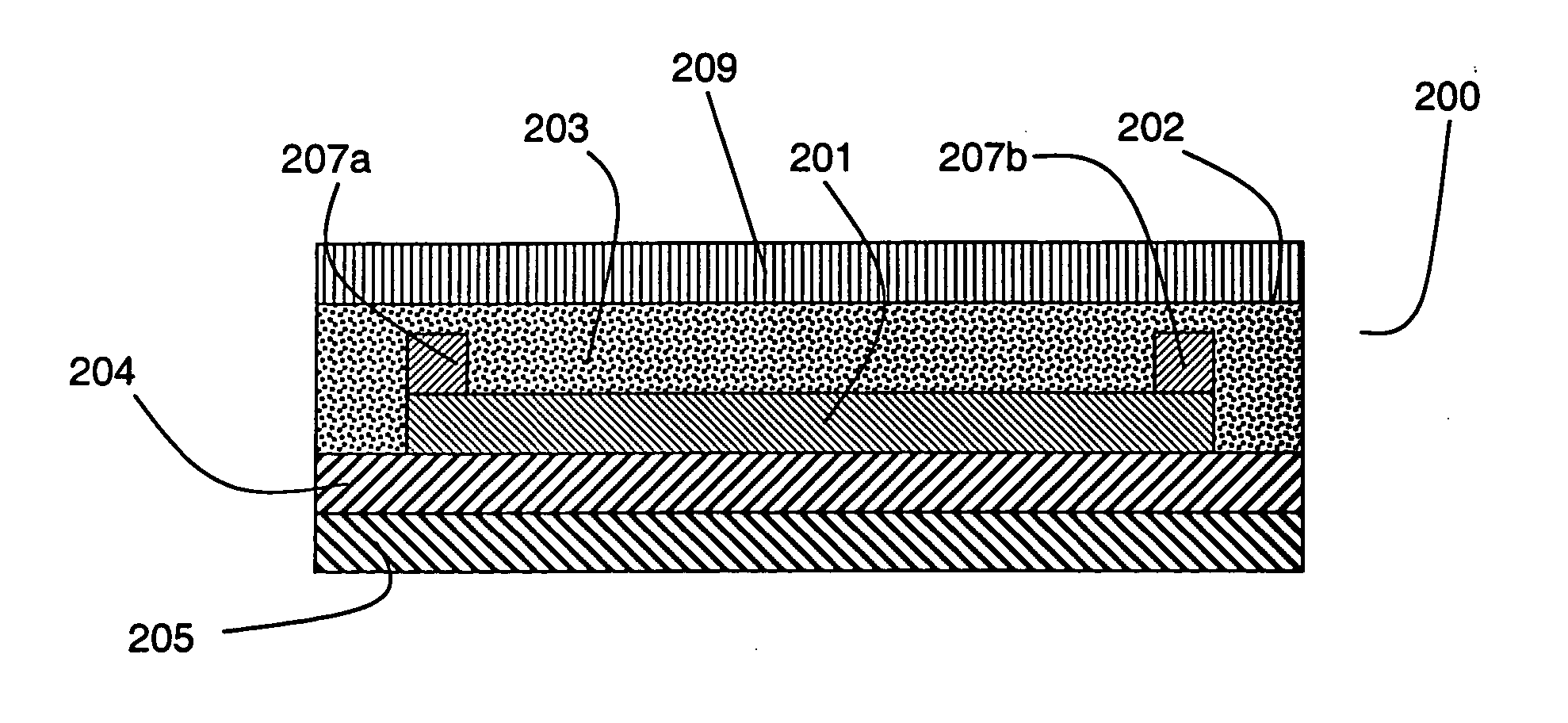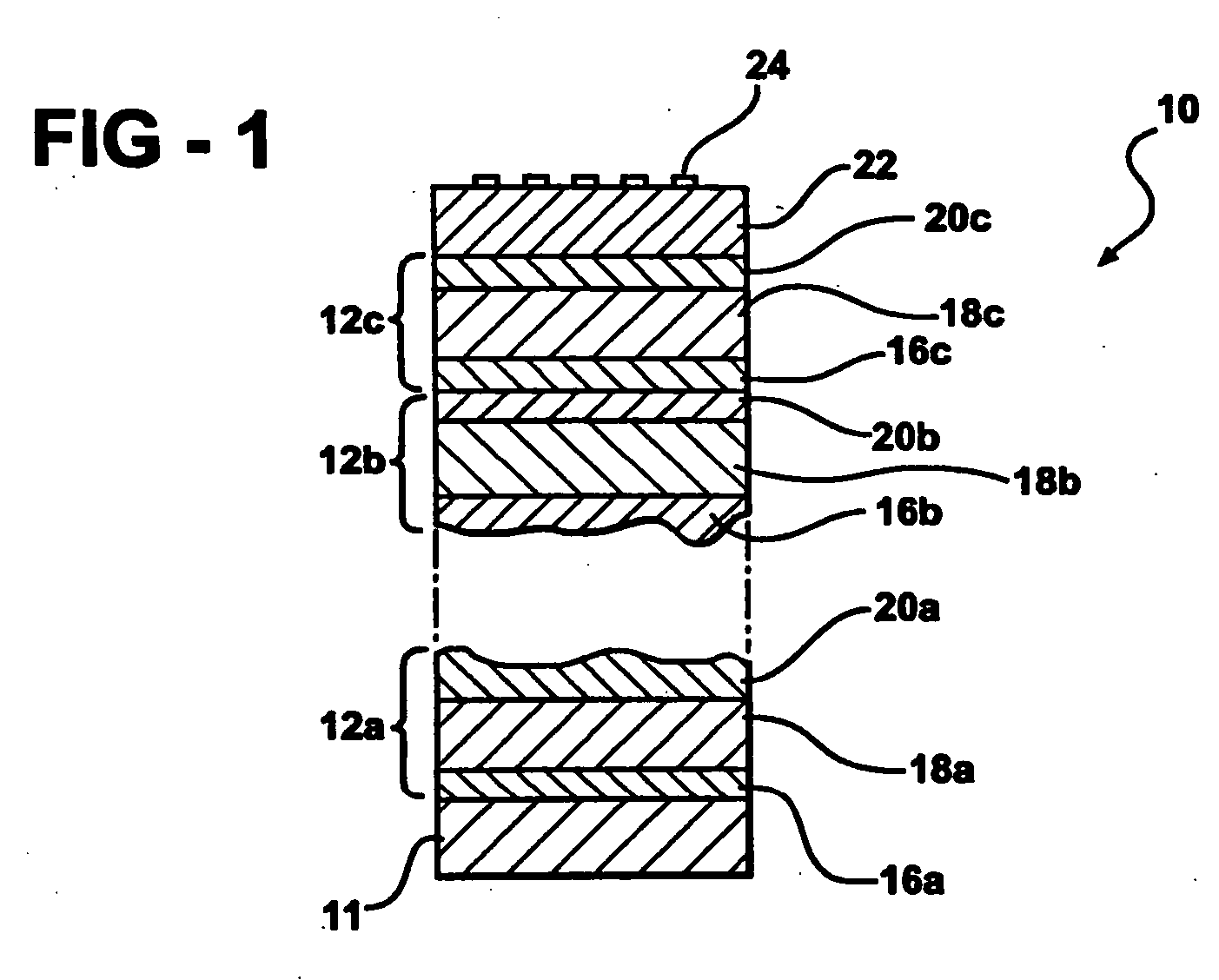Fire resistant laminate and photovoltaic module incorporating the fire resistant laminate
a technology of photovoltaic modules and fire-resistant laminates, which is applied in the direction of pv power plants, light radiation electric generators, generators/motors, etc., can solve the problems of complicated use of penetrant fasteners, limited use of fossil and nuclear fuels, and complicated shipping, handling and installation
- Summary
- Abstract
- Description
- Claims
- Application Information
AI Technical Summary
Benefits of technology
Problems solved by technology
Method used
Image
Examples
example 1
[0046] An example of the present invention was assembled by first laying 10 g / m2 glass mat on top of a solar panel that had been hard coated with a recently cold plasma treatment on the bonding surface. Glass spheres (SPHERIGLASS® #2429) having a diameter of 80 μm were combed into the surface of the glass mat to 30 g / cm with an approximately even distribution. The glass spheres were preheated to above 100° C. for 5 minutes in vacuum>25 inches Hg and allowed to cool in inert gas before sorting into glass mat. The sealant was applied in a zigzag pattern so when TEFZEL®, with the cold plasma side facing the adhesive panel, is placed and squeezed under vacuum the air entrapped in the glass mat plus glass spheres is vented allowing bubble free penetration of the adhesive. This example demonstrates a photovoltaic module that includes an encapsulant layer that contains a polymer with glass particles dispersed therein. In one embodiment, the encapsulant polymer is a fluorine containing poly...
example 2
[0047] In this example, a series of photovoltaic modules was prepared having various combinations of top lamination layers. Each sample module included a substrate onto which a photovoltaic device similar to the triple cell device depicted in FIG. 1 was deposited. After deposition of the photovoltaic device was completed, one or more lamination layers was applied to the top surface of the photovoltaic device to provide encapsulation or coverage. The lamination layers included one or more of EVA (ethylenevinylacetate), GMC (a non-woven fiber glass mat that includes a dispersion of glass fibers in an acrylic binder), and ETFE (an ethylene-tetrafluoroethylene copolymer). The lamination layers were applied in various orders and various thicknesses to the top side of the photovoltaic device. The layers were generally in the form of thin solid films or sheets and were applied sequentially to the photovoltaic module. The module was then heated to complete the lamination to form test module...
PUM
| Property | Measurement | Unit |
|---|---|---|
| diameter | aaaaa | aaaaa |
| density | aaaaa | aaaaa |
| thickness | aaaaa | aaaaa |
Abstract
Description
Claims
Application Information
 Login to View More
Login to View More - R&D
- Intellectual Property
- Life Sciences
- Materials
- Tech Scout
- Unparalleled Data Quality
- Higher Quality Content
- 60% Fewer Hallucinations
Browse by: Latest US Patents, China's latest patents, Technical Efficacy Thesaurus, Application Domain, Technology Topic, Popular Technical Reports.
© 2025 PatSnap. All rights reserved.Legal|Privacy policy|Modern Slavery Act Transparency Statement|Sitemap|About US| Contact US: help@patsnap.com



